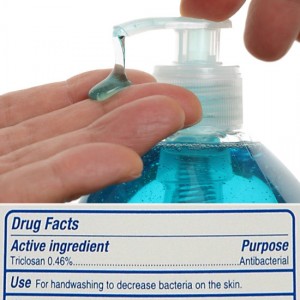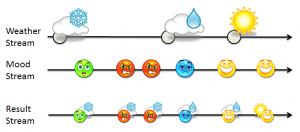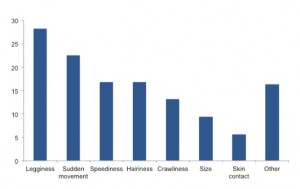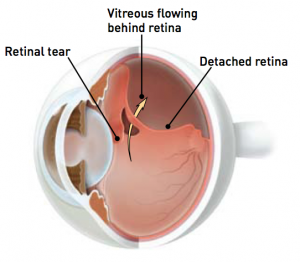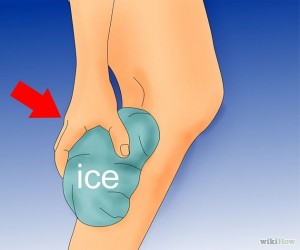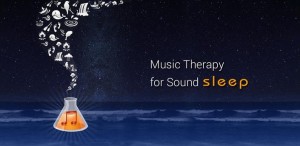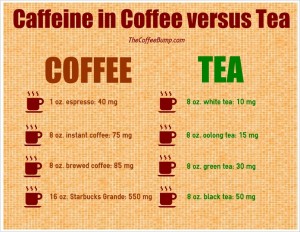Have you ever gone to the bathroom and squirted hand sanitizer into your hands? Do you use hand sanitizer before you eat or after? Personally, I try to use hand sanitizer after I go to the bathroom and as much as possible. When I go to dinner at East Commons, I always see students using hand sanitizer after eating dinner. The question going around is… Is hand sanitizer toxic? Or is this just a rumor?
The primary concern that has been circling around the usage of hand sanitizer is the main ingredient in non-alcoholic hand sanitizers; triclosan. Allison Aiello, an epidemiology professor at the University of Michigan, states, “There’s no good evidence that triclosan-containing products have a benefit. In Europe and the United States, hospitals won’t even use them…it’s thought that they don’t reduce infections or illness.” Dr. Anna Bowen, a medical epidemiologist at the CDC (Centers for Disease Control and Prevention), exclaims, “Triclosan-containing products don’t provide any disease protection beyond what you get from washing with soap and water.” Research has displayed that triclosan can intervene in the endocrine system, which can greatly increase the amount of testosterone in our bodies. Research has also shown that it can even damage our immune systems, which has been proven in animal studies. However, whether triclosan harms the endocrine and immune systems in humans is currently being looked at.
There has been further concern when exposing triclosan out into the environment. According to Aiello, when bacteria is exposed to this ingredient in hand sanitizers, it can generate antibiotic resistance. Once this resistance is moved, the bacteria itself can become resistant to a variety of antibiotics.
Overall, the main concern with hand sanitizer is that triclosan does not protect us against viruses. This is a big worry because viruses are what cause colds, not bacteria. According to researchers, we should skip using non-alcoholic sanitizers, and using hand soap is better for us. However, using alcohol based sanitizers are more beneficial because they kill approximately 60 percent bacterial pathogens (according to Bowen). Alcohol-based sanitizers can also kill some viruses, so they can easily prevent more colds and illness than non-alcoholic sanitizers. According to Deb Group, “Alcohol and alcohol-free hand sanitizers have been used in a variety of elementary school settings with significant (30% to 50%) reduction of infectious disease rates. Alcohol hand sanitizers have also been used in daycare centers by staff and by children under strict direction from staff, again providing significant infection rate reductions.” Studies based on this issue have been conducted in the United States, Sweden, and Finland.
There has been a growing concern of whether hand sanitizers are toxic. Children under the age of two years should not use any products in which alcohol is involved. According to infection investigators, day care children can use hand sanitizer products as long as they are under the supervision of an adult and use it with careful direction. A study conducted by Deb Group showed that using alcohol-based hand sanitizer five to ten times a day demonstrated no toxic impacts. The only way toxicity has been showed with hand sanitizer is if the individual has a previous skin condition in which their skin is highly sensitive to certain ingredients (such as alcohol) in skin products.
A study was reviewed by Regina Bailey when it comes to the usage of a variety of hand sanitizers. She came to the conclusion that hand sanitizers in general don’t greatly reduce the amount of bacteria on our hands. In addition, she notes that washing hands with hand soap may in fact be better than using hand sanitizer. According to the Food and Drug Association, they have recommended that hand sanitizers should not be used as a replacement for hand soap and water. Instead, they state that we should wash our hands with soap and water, and then use hand sanitizer as a supplement afterwards. So, how come manufactures of hand sanitizers have said they kill 99.9% of all germs? Bailey states that the researchers test the hand sanitizers on “inanimate surfaces”, enabling them to say the hand sanitizers exterminate 99.9% of germs. Bailey declares, “If the products were fully tested on hands, there would be no doubt be different results. Since there inherent complexity in the human hand, testing hands would definitely be more difficult. Using surfaces with controlled variables is an easier way to obtain some type of consistency in the results.”
In conclusion, there has not been strong enough evidence to show any strong correlations and casual relationships between hand sanitizers and toxicity. Studies conducted on this issue can easily be due to chance just like most experiments (chance cannot be ruled out). Even though hand soap has proven to be more effective than hand sanitizers, that does not mean hand sanitizers are not safe. Alcohol-based and non-alcohol sanitizers are both fine to use, but using them in conjunction with hand soap and water is the best option. Further research is being conducted by scientists to investigate if hand sanitizers have any significant damaging effects.
Sources:
http://www.cnn.com/2013/10/16/health/hand-sanitizer-toxic-upwave/
http://info.debgroup.com/blog/bid/337803/Is-it-Safe-for-Children-to-Use-Hand-Sanitizers


